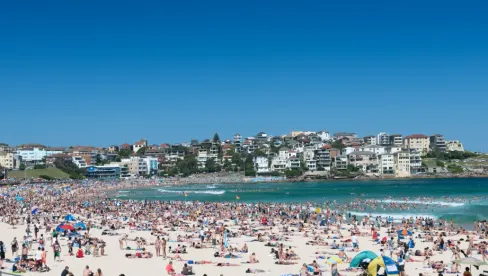The U.S. Army Corps of Engineers (USACE) recently circulated a draft proposal to renew its existing Nationwide Permits (NWPs) as well as create two new NWPs that would authorize seaweed and finfish aquaculture in coastal waters.1 Currently, the only NWP approved for aquaculture is NWP 48, associated with commercial shellfish aquaculture activities. USACE is proposing to revise NWP 48 to address concerns raised by a Washington federal district court in Coalition to Protect Puget Sound Habitat v. U.S. Army Corps of Engineers2, which recently invalidated NWP 48 in Washington State. If approved, the proposed NWPs for seaweed and finfish aquaculture activities could significantly reduce the barriers to entry for emerging seaweed and finfish industries and reduce the timeframe and cost associated with obtaining USACE authorization for such activities.
This alert describes the proposed changes to NWP 48, outlines the scope of the proposed NWPs for seaweed and finfish aquaculture, and summarizes the potential impacts of these developments on the aquaculture industry.
THE NATIONWIDE PERMIT PROGRAM
NWPs are issued by the USACE to permit a wide range of activities that, upon incorporation of identified conditions and mitigation measures, have been determined to result in minimal adverse effects to the environment. NWPs are useful for project applicants, as they reduce some of the permitting processes necessary for USACE approval, in many cases reducing the need for public notice, environmental review under the National Environmental Policy Act, state agency review under the Clean Water Act, and consideration of conditions and mitigation measures, as these issues can be dealt with programmatically as part of the NWP. While the current NWPs are authorized through 2022, USACE has taken the unusual step of seeking early reauthorization of the existing NWPs and approval of several new NWPs.
NATIONWIDE PERMIT 48
The most significant, and likely most controversial, change proposed by the new NWP 48 is removing the 1/2-acre limit for impacts to submerged aquatic vegetation in project areas that have not been used for commercial shellfish aquaculture activities in the past 100 years.3 The previous NWP 48 issued by the USACE in 2017 did not permit any commercial shellfish activities in new areas that would impact more than 1/2 acre of submerged aquatic vegetation. The new NWP 48 removes the limitation, citing a significant amount of scientific literature that the impacts of shellfish aquaculture on aquatic vegetation can be both positive and negative and are often temporary. The impact of shellfish aquaculture on aquatic vegetation has been a significant point of contention between regulatory agencies, environmental non-governmental organizations (NGOs), and the shellfish aquaculture industry in recent years, and this proposed rule change is likely to receive a significant amount of comment from all parties. If approved as part of the final rule, it would likely open up significant new areas for shellfish aquaculture in estuaries that have submerged aquatic vegetation. However, as further explained below, regional USACE offices could still implement regional conditions further regulating or restricting aquaculture in areas with submerged aquatic vegetation.
USACE has also made substantial revisions to the draft national decision document for NWP 48 in response to Coalition to Protect Puget Sound Habitat v. U.S. Army Corps of Engineers et al.4 The court in Coalition to Protect Puget Sound Habitat found that the USACE had not adequately evaluated the impacts of commercial shellfish aquaculture activities authorized by NWP 48 and that its findings of minimal individual and cumulative impacts were not supported by substantial evidence in the record. More specifically, the district court said the USACE national decision document should present a more detailed discussion of the potential impacts of commercial shellfish mariculture activities on aquatic vegetation, benthic communities, fish, birds, water quality, and substrate characteristics. The court vacated the 2017 NWP 48 in Washington State, requiring shellfish growers in that state to obtain individual permits until a new NWP 48 is approved. The new decision document addresses a number of the concerns raised by the court in Protect Puget Sound Habitat; however, it is anticipated that the USACE will receive a significant amount of comments as to whether the new decision document adequately addresses those concerns.
The new draft NWP 48 also removes certain Pre-construction Notification (PCN) thresholds.5 PCN thresholds govern when an applicant must notify the USACE to confirm compliance with the NWP prior to construction. The new NWP eliminates two previous PCN requirements included in the 2017 NWP 48 for commercial shellfish mariculture activities that (1) include a species that has never been cultivated in the waterbody or (2) are located in a project area that has not been used for commercial shellfish mariculture activities in the past 100 years. USACE reasons that the first PCN threshold inhibits efforts to increase populations of native shellfish in coastal waters, and the terms of NWP 48 already protect against the introduction of nonindigenous or invasive species. The second PCN threshold is being removed because the new NWP 48 removes the definition of “new commercial shellfish aquaculture operation” as well as the prohibition against greater than 1/2-acre impacts for such operations. However, as noted by the USACE in the proposed rule, many proposed shellfish aquaculture projects may still be required by the USACE regional office to submit a PCN if their project is proposed in an area with essential fish habitat. Given that many aquaculture projects are located in areas with designated essential fish habitat, this rule revision may be of limited practical effect.
NATIONWIDE PERMIT A: SEAWEED MARICULTURE ACTIVITIES
USACE is proposing to issue a new permit to authorize structures and works in marine waters, including structures anchored to the seabed in federal waters over the outer continental shelf, for seaweed mariculture activities.6 The USACE is proposing to include multi-trophic mariculture activities in this permit to allow the mariculture operator to cultivate other species, such as shellfish, in addition to seaweed. Currently, NWP 48 does not authorize seaweed mariculture activities and permittees who cultivate seaweed are required to obtain an individual permit, except in some districts where USACE has issued general permits that cover seaweed mariculture activities.
NWP A will authorize seaweed mariculture activities in the territorial seas (generally three nautical miles from the coast) and in federal waters beyond the territorial sea over the outer continental shelf. The USACE has initially concluded that seaweed mariculture activities do not require a permit under Section 404 of the Clean Water Act; therefore, the NWP would only authorize the activities under Section 10 of the Rivers and Harbors Act (associated with structures and work within waters of the United States). Projects must be sited to avoid use conflicts, including avoidance of federal navigation channels, shipping safety fairways, military sites, oil and gas pipelines, or open water dredged material disposal sites.
NWP A will require a PCN for all activities authorized by the permit in order to allow district engineers to review each proposed activity for potential adverse effects on navigation. The prospective permittee only needs to submit one PCN per structure or group of structures to be used for the seaweed mariculture operation. The PCN must include a map showing the location and dimension of the proposed structures, the names of species that will be cultivated, and the general water depths of the project site(s).
NATIONWIDE PERMIT B: FINFISH MARICULTURE ACTIVITIES
USACE is proposing to issue a NWP to authorize structures and work in marine and estuarine waters for finfish mariculture activities, including structures anchored to the seabed in waters over the outer continental shelf.7 NWP B would not authorize land-based or freshwater finfish mariculture activities. NWP B is not limited to particular species, although it notes that the most common finfish cultivated in marine and estuarine waters are Atlantic salmon and white surgeon. NWP B also proposes to authorize multi-trophic mariculture if the permittee wants to cultivate other species, such as shellfish or seaweed, with finfish. As with NWP A, USACE proposes to add terms to NWP B to prevent conflicts with other ocean uses; namely, NWP B will require structures to comply with specific U.S. Coast Guard and USACE regulations pertaining to navigation, shipping safety, and dredged material disposal sites.
Finfish mariculture activities may require authorization under both Section 10 of the Rivers and Harbors act and Section 402 of the Clean Water Act for discharges of pollutants into navigable waters. For instance, certain discharges related to animal wastes, feeds, or chemicals may require a National Pollutant Discharge Elimination System (NPDES) permit from the Environmental Protection Agency (EPA). Additionally, finfish mariculture activities on the outer continental shelf may require authorizations from other federal agencies such as the Bureau of Ocean Energy Management or the U.S. Coast Guard.
USACE is proposing to require a PCN for all activities authorized by NWP B to allow district engineers to review each proposed activity. District engineers will review PCNs for proposed finfish mariculture activities to evaluate effects on the aquatic environment, navigation, and other public interest review factors. The PCN must include a map showing the location and dimension of the proposed structures, the names of species that will be cultivated, and the general water depths of the project site(s).
IMPLICATIONS FOR AQUACULTURE
The USACE’s additions and revisions seek to align the NWPs with the goals set forth in Executive Order 13921, Promoting American Seafood Competitiveness.8 That Executive Order sought to encourage U.S. aquaculture by removing regulatory barriers faced by the aquaculture industry. Overall, adoption of the proposed NWPs may significantly reduce the burdens to aquaculture applicants in obtaining a USACE permit, particularly for seaweed and finfish aquaculture projects that could not previously seek NWP verification.
The revisions to NWP 48 seek to address many of the concerns raised by the Washington district court in Coalition to Protect Puget Sound Habitat. If successful in doing so, the new NWP 48 and decision document would eliminate a significant obstacle to the shellfish aquaculture industry in Washington, where the industry is currently being forced to seek a more expensive individual permit to continue operations. It would also prevent the Coalition case from being used more broadly to invalidate NWP 48 authorizations in other jurisdictions.
The NWPs associated with seaweed and finfish aquaculture in federal waters could significantly reduce the USACE permitting process associated with such activities, as well as facilitate coordination between the USACE and other federal agencies, like EPA, that may also have permitting authority over such projects.
NEXT STEPS
The USACE will soon publish its proposed rulemaking for the reissuance of nationwide permits (including NWP 48) and the two new aquaculture NWPs in the federal register for public comment. Interested parties will have 60 days to submit public comments. It is likely that all three nationwide permits will be subject to significant public comment from local and state regulatory agencies, environmental NGOs, and other stakeholders. The proposed NWPs will also be reviewed by the USACE regional offices to determine if additional terms or conditions should be imposed to address regional conditions. The NWPs will also be reviewed by the EPA and/or the state agency responsible for water quality certifications under Section 401 of the Clean Water Act, where such agencies may issue water quality certifications for the activities permitted by the NWPs, as well as require additional terms and conditions. Finally, the draft NWPs will be reviewed by state agencies for compliance with Coastal Zone Management Act requirements.
It is strongly encouraged that interested parties in the industry submit public comments on any applicable NWPs, including statements of support for the NWPs, recommendations as to how the NWPs can be improved, and supporting both the USACE’s scientific and economic basis for the NWPs. It will be particularly important to support the scientific basis for the NWP actions, as the decision in Coalition to Protect Puget Sound Habitat serves as a stark reminder of the potentially significant repercussions if a court finds that the USACE national decision document does not provide adequate justification for the NWP.
1 Proposal to Reissue and Modify Nationwide Permits, Pre-publication Rule (Pre-publication Rule).
2 Coal. to Protect Puget Sound Habitat v. U.S. Army Corps. of Engineers, 417 F. Supp. 3d 1354, 1356 (W.D. Wash. 2019).
3 Pre-publication Rule at 86.
4 Pre-publication Rule at 85 (discussing revisions made in response to court ruling); See also Coal. to Protect Puget Sound Habitat, 417 F. Supp. 3d at 1367.
5 Pre-publication Rule at 97.
6 Pre-publication Rule at 117.
7 Pre-publication Rule at 121.
8 Exec. Order 13921, 85 Fed. Reg. 28,471 (May 12, 2020). For a more detailed discussion of this order, see our alert, COVID-19: Trump Administration Takes Actions to Assist U.S. Aquaculture.





 />i
/>i

